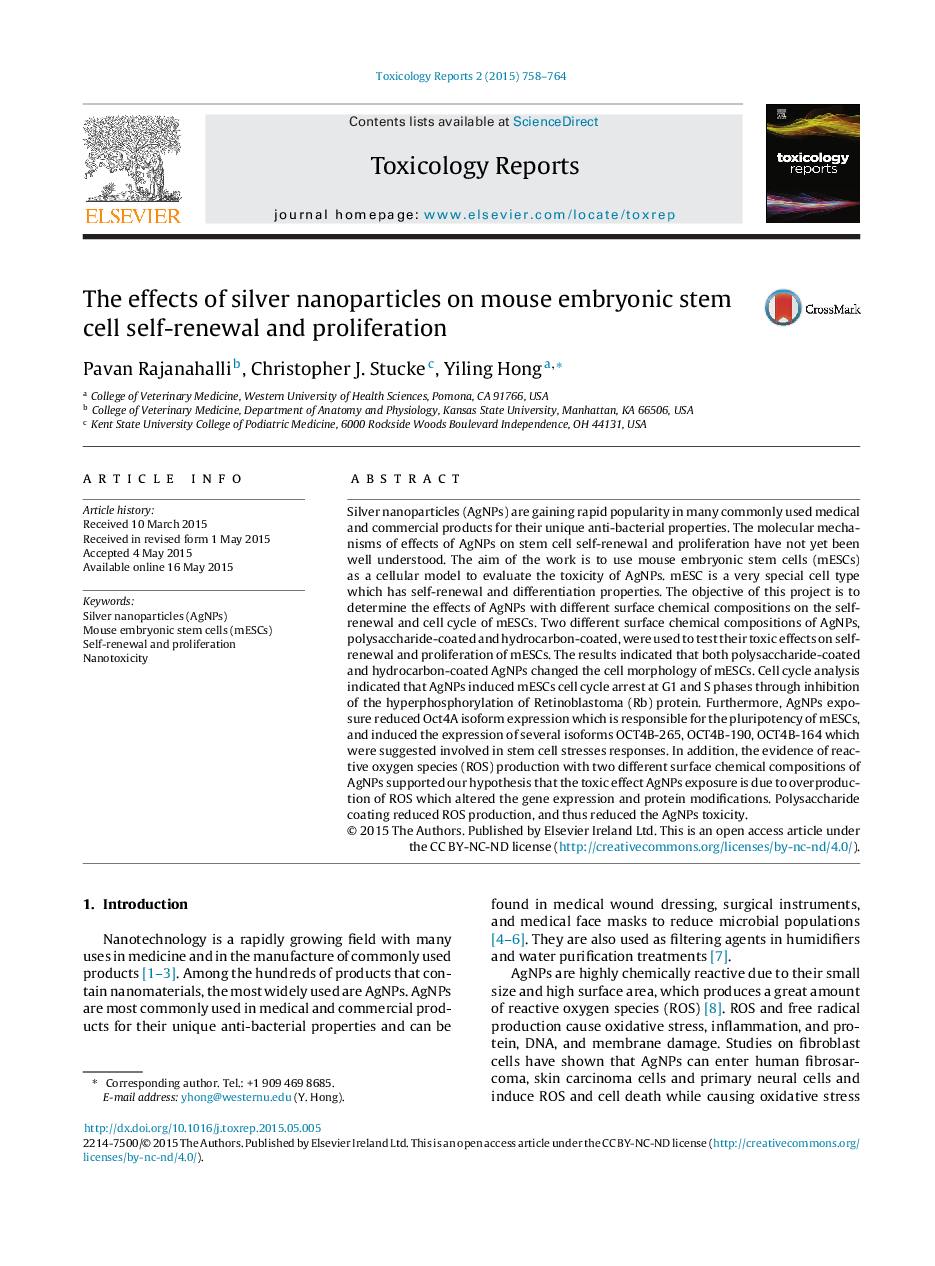| کد مقاله | کد نشریه | سال انتشار | مقاله انگلیسی | نسخه تمام متن |
|---|---|---|---|---|
| 2572270 | 1561192 | 2015 | 7 صفحه PDF | دانلود رایگان |
Silver nanoparticles (AgNPs) are gaining rapid popularity in many commonly used medical and commercial products for their unique anti-bacterial properties. The molecular mechanisms of effects of AgNPs on stem cell self-renewal and proliferation have not yet been well understood. The aim of the work is to use mouse embryonic stem cells (mESCs) as a cellular model to evaluate the toxicity of AgNPs. mESC is a very special cell type which has self-renewal and differentiation properties. The objective of this project is to determine the effects of AgNPs with different surface chemical compositions on the self-renewal and cell cycle of mESCs. Two different surface chemical compositions of AgNPs, polysaccharide-coated and hydrocarbon-coated, were used to test their toxic effects on self-renewal and proliferation of mESCs. The results indicated that both polysaccharide-coated and hydrocarbon-coated AgNPs changed the cell morphology of mESCs. Cell cycle analysis indicated that AgNPs induced mESCs cell cycle arrest at G1 and S phases through inhibition of the hyperphosphorylation of Retinoblastoma (Rb) protein. Furthermore, AgNPs exposure reduced Oct4A isoform expression which is responsible for the pluripotency of mESCs, and induced the expression of several isoforms OCT4B-265, OCT4B-190, OCT4B-164 which were suggested involved in stem cell stresses responses. In addition, the evidence of reactive oxygen species (ROS) production with two different surface chemical compositions of AgNPs supported our hypothesis that the toxic effect AgNPs exposure is due to overproduction of ROS which altered the gene expression and protein modifications. Polysaccharide coating reduced ROS production, and thus reduced the AgNPs toxicity.
Journal: Toxicology Reports - Volume 2, 2015, Pages 758–764
